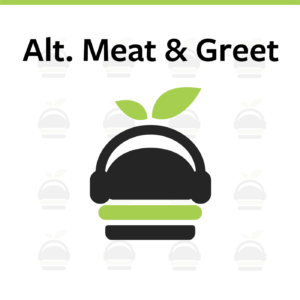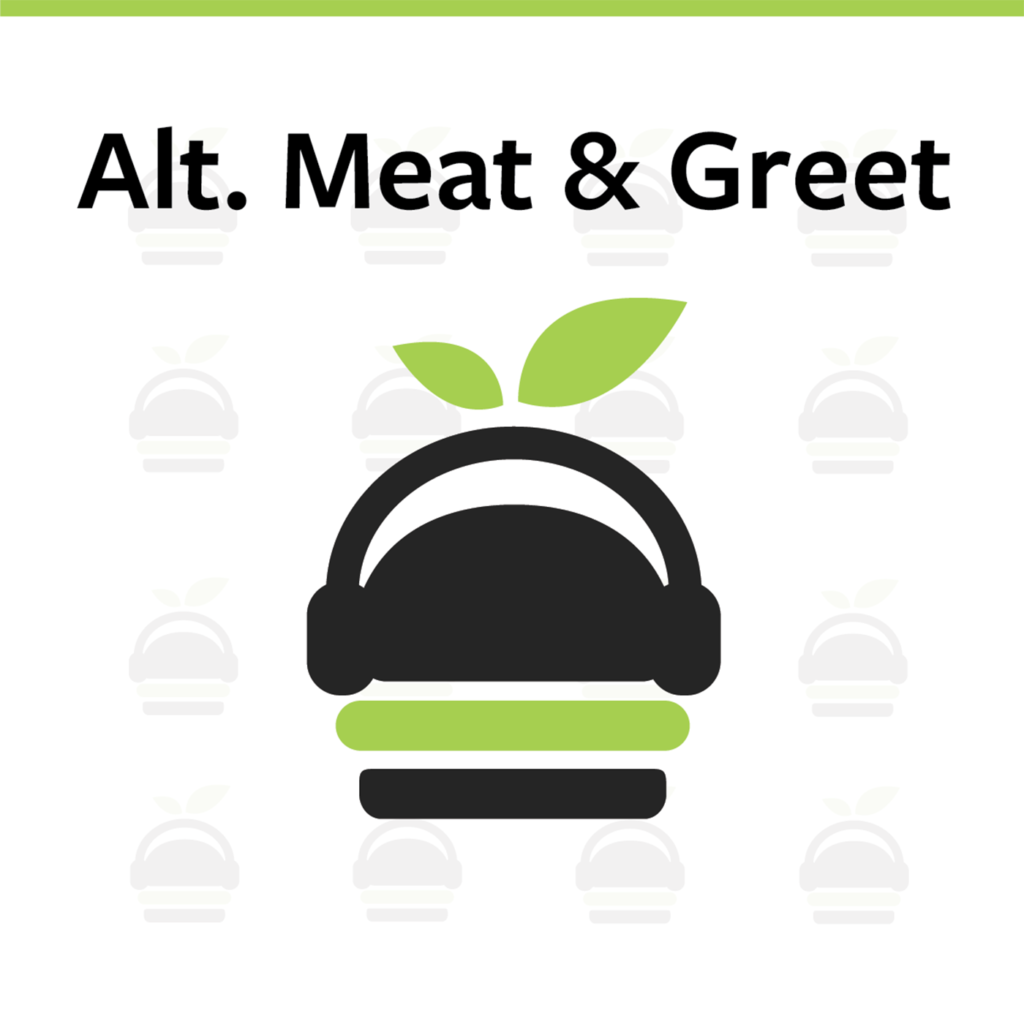Demand for meat around the world is higher than it’s ever been –– and we’re running out of the resources needed to provide it.
It’s well-known that the meat industry uses up exorbitant amounts of land and water, making it a large contributor to climate change. If people in the United States, a global leader in meat consumption, want to continue eating burgers and chicken tenders at their current rate, something needs to change. Silicon Valley’s answer to this problem? Better meat alternatives.
On this week’s episode of Alt.Meat & Greet, Allison Berke from the Good Food Institute, a nonprofit promoting the development of clean and plant-based meat, joined us to offer her insights about how researchers and scientists are working to develop the products that she hopes will one day replace meat.
From Tofu to the Impossible Burger
According to Berke, the alternative meat industry has been around for more than 2,000 years — beginning with the development of foods, such as seitan and tofu, which originated in Asia. However, advancements in technology over the last decade have paved the way for alternatives that resemble meat more than ever before.
“I would say that within Silicon Valley there’s just a general attitude of wanting to disrupt industries and move everything in the direction of technical innovation,” Berke said. “So the idea that we could disrupt something as essential as something that we eat maybe three times a day is kinda a spur for innovation.”
For developers of plant-based meat, advancements in protein isolation have been a game changer, helping them to better replicate the nutritional profiles of real meat. Protein isolation is a technique used to create popular Silicon-Valley based products, such as the Impossible Burger and the Beyond Burger, which boast that they taste, sear and bleed like real meat.
Additionally, scientists are also currently working to perfect the development of “clean meat,” a type of meat that is grown from stem cells, rather than taken from slaughtered animals.
The case for meat alternatives
But why work on creating these highly complex meat alternatives when many vegetarians and vegans have successfully adopted a plant-based diet without them?
For one, as countries develop, their citizens tend to move from grain-based diets to diets that contain more animal products, Berke said. The number of people who voluntarily opt to become vegetarian (about 5 percent globally, according to a 2014 study by the Heinrich Böll Foundation) don’t even come close to the growing number of people adding more meat into their diets.
According to Berke, the solution to promoting a better diet is making meat alternatives as desirable to people as real meat.
“We see two competing interests: One in conserving water and conserving land and another in people wanting to eat more and more meat,” Berke said. “So that’s where plant-based meat or clean meat can come in as a partial solution to these problems by helping us preserve some of the natural resources that currently are going into animal agriculture.”
Challenges Ahead
But meat alternatives can only become a solution to this problem if the public begins to fully accept them into their diets –– something that has yet to happen.
But while meat alternatives are not yet commonplace, Berke believes that this process is currently in motion. She noted that products like the Impossible Burger and the Beyond Burger are now becoming more widely available in restaurants and grocery stores across the country.
Price point, however, still acts as a barrier that stops meat alternatives from becoming as popular as they could be. The complex scientific processes behind the development of these products makes them much more expensive than their animal-based counterparts.
Some clean meat products can cost thousands of dollars to develop. Advanced plant-based burgers are significantly cheaper, but retailing at more than $10 a pound, are still more expensive than real meat.
Many developers of meat alternatives, however, believe that these products will one day be able to retail at the same price of meat, once their production scale increases. And while Berke noted that there’s still a long ways to go in terms of the social acceptance of alternative meat, she believes that people’s growing concern for the environment will eventually help them make the jump to meat alternatives.
“Through education and awareness of how our choices impact the environment, we’re going to see more demand for plant-based food,” Berke said.
Transcript:
Demand for meat around the world is higher than it’s ever been –– and we’re running out of the resources needed to provide it.
It’s well-known that the meat industry uses up exorbitant amounts of land and water, making it a large contributor to climate change. If people in the United States, a global leader in meat consumption, want to continue eating burgers and chicken tenders at their current rate, something needs to change. Silicon Valley’s answer to this problem? Better meat alternatives.
On this week’s episode of Alt.Meat & Greet, Allison Berke from the Good Food Institute, a nonprofit promoting the development of clean and plant-based meat, joined us to offer her insights about how researchers and scientists are working to develop the products that she hopes will one day replace meat.
From Tofu to the Impossible Burger
According to Berke, the alternative meat industry has been around for more than 2,000 years — beginning with the development of foods, such as seitan and tofu, which originated in Asia. However, advancements in technology over the last decade have paved the way for alternatives that resemble meat more than ever before.
“I would say that within Silicon Valley there’s just a general attitude of wanting to disrupt industries and move everything in the direction of technical innovation,” Berke said. “So the idea that we could disrupt something as essential as something that we eat maybe three times a day is kinda a spur for innovation.”
For developers of plant-based meat, advancements in protein isolation have been a game changer, helping them to better replicate the nutritional profiles of real meat. Protein isolation is a technique used to create popular Silicon-Valley based products, such as the Impossible Burger and the Beyond Burger, which boast that they taste, sear and bleed like real meat.
Additionally, scientists are also currently working to perfect the development of “clean meat,” a type of meat that is grown from stem cells, rather than taken from slaughtered animals.
The case for meat alternatives
But why work on creating these highly complex meat alternatives when many vegetarians and vegans have successfully adopted a plant-based diet without them?
For one, as countries develop, their citizens tend to move from grain-based diets to diets that contain more animal products, Berke said. The number of people who voluntarily opt to become vegetarian (about 5 percent globally, according to a 2014 study by the Heinrich Böll Foundation) don’t even come close to the growing number of people adding more meat into their diets.
According to Berke, the solution to promoting a better diet is making meat alternatives as desirable to people as real meat.
“We see two competing interests: One in conserving water and conserving land and another in people wanting to eat more and more meat,” Berke said. “So that’s where plant-based meat or clean meat can come in as a partial solution to these problems by helping us preserve some of the natural resources that currently are going into animal agriculture.”
Challenges Ahead
But meat alternatives can only become a solution to this problem if the public begins to fully accept them into their diets –– something that has yet to happen.
But while meat alternatives are not yet commonplace, Berke believes that this process is currently in motion. She noted that products like the Impossible Burger and the Beyond Burger are now becoming more widely available in restaurants and grocery stores across the country.
Price point, however, still acts as a barrier that stops meat alternatives from becoming as popular as they could be. The complex scientific processes behind the development of these products makes them much more expensive than their animal-based counterparts.
Some clean meat products can cost thousands of dollars to develop. Advanced plant-based burgers are significantly cheaper, but retailing at more than $10 a pound, are still more expensive than real meat.
Many developers of meat alternatives, however, believe that these products will one day be able to retail at the same price of meat, once their production scale increases. And while Berke noted that there’s still a long ways to go in terms of the social acceptance of alternative meat, she believes that people’s growing concern for the environment will eventually help them make the jump to meat alternatives.
“Through education and awareness of how our choices impact the environment, we’re going to see more demand for plant-based food,” Berke said.



